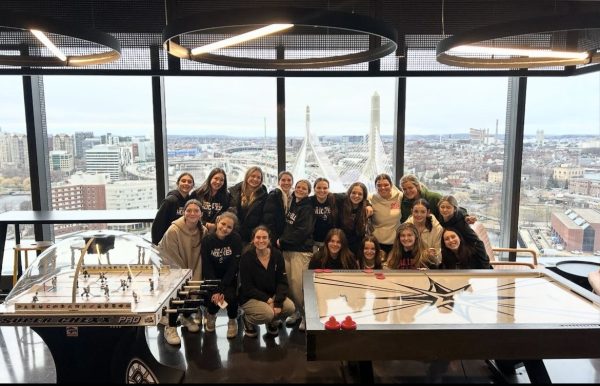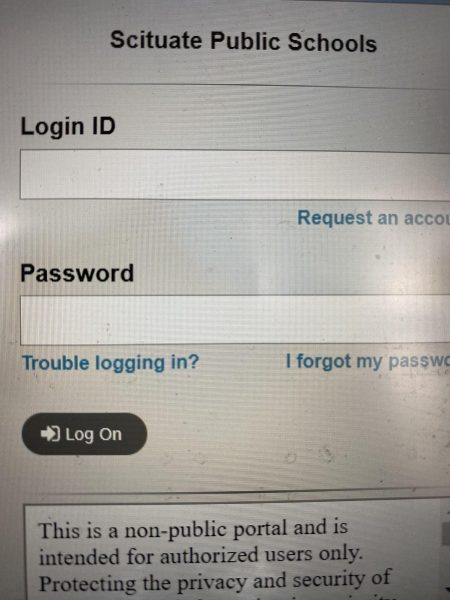On the Big Screen: How a Changing Streaming Video World Will Change Everything
March 5, 2020
It used to be that everyone bought their movies. Whether it was driving down to Blockbuster in the early 2000s, or on the iTunes Movies Store a few years later, movies were collected and stored. You bought a few each year, went to the theater to see the rest, and that was that.
Netflix changed all of that. While there had been subscription services in the past—mainly for music—no one had ever done something of this scale for video before. It wasn’t the fact that it was digitized either, but Netflix’s revolutionary business model harkened the end of the purchasable era and the start of the steaming one.
At first, Netflix worked by sending people physical DVDs, not online streaming, but the idea—paying one fee per month to access a virtually unlimited library of content—worked. As bandwidth increased, and technologies improved, Netflix was able to abandon their DVD rental business, and pivot completely to internet-powered streaming. Now, instead of spending hundreds of dollars a year to watch only a few movies—let alone much more to watch broadcast TV—you could just pay $15 or so per month, and get all the video media you could want.
The early 2010s were a good era for Netflix: they had few competitors, and traditional content companies were eager to dump their entire catalogs on a hip new platform like Netflix—it was an easy way for them to test the digital waters. Netflix wasn’t the giant they are today, and so working with them didn’t carry the risk of cannibalizing their tried and true methods of content distribution.
As Netflix continued to grow, faster and faster, however, the content companies started to take notice. Instead of paying for the incredibly lucrative broadband+cable bundles they used to, an increasingly larger group of customers were picking to ditch the cable plan, and switch entirely to Netflix for their content—“cord-cutters” they were called. Instead of taking this transition in the face, the media companies took action, and that action was removing large swaths of their content from Netflix, and gearing up to launch competitor platforms.
What’s interesting is that the music industry just recently faced a similar transition. People switched from buying their music on iTunes, to renting it on Spotify and Apple Music. Instead of each production company launching their own service, think Warner Music, the music companies focused on making the music, and the platform companies handled the rest.
Music companies have always been more forward-looking when it comes to technology—they adopted internet sales with iTunes long before their film and television counterparts—so it’s not surprising that they were first to the streaming game. What’s really notable is the radically different ways each industry approached streaming. Where music rallied around all-encompassing platforms, video was okay to fracture off, where each content company has its own walled garden of media.
Every individual media company is working to build its own streaming service. Disney just recently launched Disney+. Comcast, the owner of NBCUniversal, is expected to release Peacock next year. AT&T, who bought TimeWarner, is going to launch HBO Max next year as well. Viacom, the parent company of CBS, already has AllAccess. While this arraignment is very fruitful for the corporate producers of content, it’s not ideal at all for the consumer. No one wants to pay over a hundred dollars per month just for television—this is before factoring in services like Amazon Prime, Netflix, and Hulu. What the media industry is facing is a market that wants one thing, a unified streaming service like what they pay for with music and shareholders who want the opposite: a heavily fractured market that forces huge customers to spend as much as possible.
Apple, who recently launched Apple TV+, is working toward a product that will deliver just that. Since early 2013, they’ve been engaged in content negotiations with media companies, to secure the rights necessary to build a product very much like Apple Music but for video. Unfortunately for them, this was around the time that those same content companies grew skeptical of Netflix model: they’d lose control over the entirety of distribution.
These deals mostly fell through, and companies who once thought they’d focus just on distribution were forced with a choice: either shut their doors, as they have no more content left to sell, or start making exclusive original content of their own. All of the streaming services picked the latter option, and hence we got shows such as House of Cards, Stranger Things, and Man in the High Castle. Streaming companies weren’t going to go without a fight, and the battle they chose to wage was one of creating great content themselves.
Apple was thrown into the same arena as everyone else, and they as well decided to launch an original content service: Apple TV+. Rather than focus on just making content, however, they also decided to make a platform. They hadn’t given up—and still haven’t—on making Apple Music for video a reality. They just chose to play the long game instead.
In 2015, with the new Apple TV, they poised that the “future of television is apps.” Content companies could make their own apps, and customers would use them to play their content—just like on iPhone and iPad. The following year, the TV app was introduced—it pulled content from those same apps, and standardized the interface. Now you could go to one place and see all of the movies and TV shows, from all of the services and apps you used. Apple TV Channels further abstracted the content from apps: now, with select services, you can subscribe and watch content right in the TV app, no downloads or signing in necessary. Apple TV+ fits right into this framework; it’s just another service in the TV app.
Apple TV+ has already gotten off with great footing: The Morning Show has won Critics Choice Awards, Golden Globes, and a Screen Actors Guild award. This is on top of the impressive lineup of shows they have and are in the process of launching. From Steven Spielberg to Oprah, Apple is tapping into a rich Hollywood culture to build its new service.
Focus is just as critical for Apple’s venture into original content. Instead of trying to direct and produce content themselves (something their Silicon Valley neighbors are all too eager to do), they instead are leaving the content creation to the ones who do it best: production studios. Apple is then left to focus on building the world’s best-curated collection of content and present it to the user in the best way possible.
These two things in unison, content quality and curative focus, will yield incredible consumer popularity. Customers will not only use the Apple TV App to watch Apple TV+, but also to watch all their content, from HBO to Disney. Give this strategy a dozen months or so, and Apple will have a large base of hundreds of millions of customers who are deeply familiar with their platform, and who use it solely for their content.
At the same time, Apple will be finding success with their holistic strategy, traditional companies will be facing a painful realization. While their drive to fracture the streaming market will create short-term increases in profit, it’ll also drastically reduce their customer base over the long run. Because most people won’t subscribe to all fifteen services—they’ll be picking two or three at most—content companies are only going to have access to a portion of the market.
And while their initial negotiations didn’t go flawlessly, Apple will be in a much stronger position next time around. Content companies want more viewers? Apple will be able to proudly say they have hundreds of millions of loyal TV App customers. These content companies will be much more eager to sign over content rights to Apple when they realize how the economics of running a streaming service themselves won’t work out. And once Apple has those rights, they’ll have everything they need—the platform, the customer loyalty, and most importantly the content—to build the streaming service that everyone wanted all along.
There is no other company with the same strategy and opportunity that Apple possesses right now. Netflix is at the point of abandoning the idea of curating and hosting other’s content—they’re devoted entirely to making their own, though it’s doubtful if they’ll truly be able to attract first-rate talent when competing directly with Hollywood. Hulu is very much in the same boat—with no content coming in, and only weaker attempts at originals going out. And most of Amazon’s catalogue is made up of content that’s only available title to title—Prime covers just Amazon originals and a few subsidies, nothing like the a la carte service Apple is about to bring to market.
Apple, while they may have missed their original launch window, is in an incredibly unique position. Competitive uniqueness, combined with a massive customer base, and about-to-be support from major league content companies, is the perfect recipe for the ideal streaming product. While everyone in Hollywood is busy trying to compete with Silicon Valley, and everyone back on the bay is doing the reverse, Apple is creating unity between the two worlds. Just like they did in 2003 with the iTunes Music Store, 2007 with the Movies Store, and again in 2015 with Apple Music, their biggest strength is what they do best across all markets—making great technology not intimidating, but delightfully approachable and understandable. It worked for the music industry, it works for the consumers of their products, and it’s going to work for television and movie corporations.









